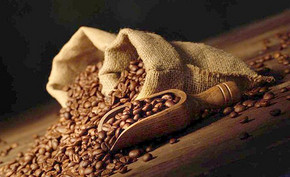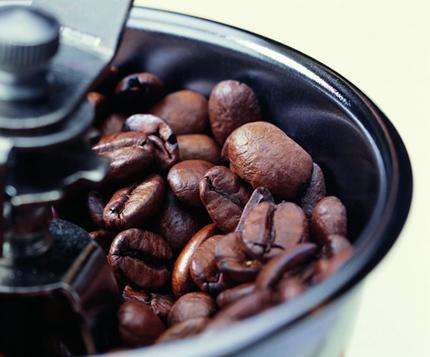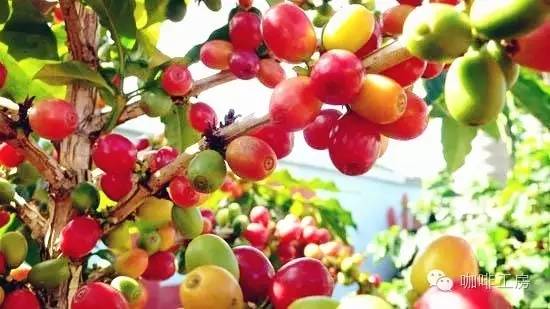Introduction to the origin of coffee beans in Uganda
The equator crosses Uganda, and the right climate makes it the world's leading producer of Robusta coffee beans. In the 1960s Uganda's coffee production remained at 3.5 million bags per year. By the mid-1980s, mainly for political reasons, coffee production had dropped to 250 bags a year. But coffee production is picking up again and is now about 3 million bags a year. One of the major problems facing the coffee industry is the lack of good roads to transport coffee to ports such as Mombasa in Kenya or Dar es Salaam in Tanzania.
In order to improve coffee quality and reduce costs, Uganda abolished the exclusive rights of the Coffee Marketing Board (CMB) in November 1990. Most of the work previously undertaken by the Coffee Marketing Committee has now been transferred to cooperative organizations. Privatized coffee generates two-thirds of the country's export revenue, so the government imposed a tax on coffee in the hope of raising much-needed revenue. This has led to a 20% drop in coffee exports and an increase in coffee smuggling.
As in Tanzania, where rising coffee prices in recent years have encouraged farmers to return to plantations and reclaim once-abandoned land for coffee, Uganda's coffee industry looks promising.
Mbale in Mount Elgon on the east and other production areas near the border with the Democratic Republic of the Congo on the west take Wugar as the export name. Officially listed grades are Oaganic(organic), Bugisu AA, Bugisu A, Bugisu B, Bugisu PB, Wugar, Drugar and others not listed. To find Ugandan coffee with excellent performance, we must first identify Bugisu AA, A and PB grades. However, due to the country's inland location and many transportation problems, we often find green beans with low moisture content and not green appearance. However, Ugandan coffee is not a coffee type that emphasizes rising aroma. As long as the green beans are not turned hundred or yellow, they can generally have good flavor performance in the producing area. They have a low ripe fruit aroma, such as red wine taste, and a thick body. It is similar to some low-toned Kenyan beans, but also has a mild earthy taste, so it is quite different from other East African countries in flavor characteristics, but it is somewhat similar to Asian Indonesian Sulawesi Tonaga coffee and Java country manor coffee. Baking degrees between City+ and Full City+ are all better.

Country of origin: Uganda
Model: AA.A2.BP.B4.CS
Organic Uganda Bugisuganda bugisu AA 18 Order
Uganda is a landlocked country in eastern Africa, straddling the equator, bordering Kenya in the east, Tanzania and Rwanda in the south, Congo (DRC) in the west and Sudan in the north. Most of the territory is located in the Central African Plateau, multi-lake, with an average altitude of 1000-1200 meters. There are many intermountain lakes and plateaus, known as "plateau water town". The western branch of the Great Rift Valley runs through the western border, and there are many rivers and lakes at the bottom of the valley. Uganda has a Victoria Lake, coupled with many mountains in the territory, making Uganda, although across the equator, but mild climate, suitable for coffee cultivation.
Coffee cultivation is one of Uganda's export pillars and Uganda is the birthplace of African Robusta, just as Ethiopia is the home of Arabica coffee, which was first discovered in Uganda. Uganda has been growing coffee for over 100 years. It is the second largest producer in Africa after Ethiopia. Uganda is also one of the few major African countries committed to organic coffee production. In Uganda, where Arabica coffee beans account for only 15% of the country's coffee production, Uganda's best coffee is mainly grown in the Elgon and Bugisu mountains along the Kenyan border in the northeast and in the Ruwensori mountains in the west.

Coffee cultivation in Uganda is entirely family-based and small-scale. The livelihoods of 25 per cent of the population are linked to coffee production. There are about 500000 farms growing coffee, but mainly producing roberts. Robster accounts for 90% of coffee production, with the rest becoming Arabica coffee. Arabica and Hobbs are harvested from October to February. The main distribution areas and marked quality grades of coffee in Uganda are Bugisu AA (only 4% of the country's total production), Bugisu A, Wago Wugar A (all washed), and a small amount of sun-dried beans. Bugisu AA. Where AA stands for coffee grade, representing the highest grade in the country, Bugisu grows on the slopes of Mount Elgon in eastern Uganda. The palate is thick and low in acidity, with a distinctive taste of raw papaya distinct from other East African coffees and closer to Indonesian Java coffee.
Uganda ranks among Africa's leading coffee producers, accounting for more than 70 per cent of its total exports. In the 1960s Uganda's coffee production remained at 3.5 million bags per year. By the mid-1980s, largely for political reasons, coffee production had fallen to 2.5 million bags a year. But coffee production is picking up again and is now about 3 million bags a year. It is mainly exported to the European Union, with Germany, Italy and other countries as its largest coffee buyers.
Ugandan coffee settled in Beijing
Xinhua Agency, Beijing, April 3 (Reporter Wang Jun)--Beijing Chenao Coffee Co., Ltd., a cooperative project between China and Uganda, officially opened in Beijing today. Deputy Prime Minister James Wapakhabulo of Uganda and his wife Angelina Wapakhabulo, Executive Vice Mayor of Beijing City Meng Xuenong attended the opening ceremony.
Beijing Chenao Coffee Co., Ltd. is a joint venture between Beijing Beichen Industrial Group Company and Uganda Coffee Development Bureau. It is the first coffee enterprise in Uganda to cooperate with China.
Uganda is a tropical African country with fertile soil, suitable altitude and climatic conditions suitable for the growth of high-quality coffee. As early as more than ten years ago, the leaders of China and Ukraine had the intention to promote trade cooperation and traditional friendship between the two countries through coffee trade. With the concern of the leaders of the two countries and the support of the Beijing City Government, Beijing Beichen Industrial Group Corporation and Uganda Coffee Development Bureau formally signed a cooperation agreement on January 21 this year. Chenao coffee company launched, the selection of a well-known rare bird in Uganda---crown crane logo as a trademark to represent the coffee products natural, pure.
Important Notice :
前街咖啡 FrontStreet Coffee has moved to new addredd:
FrontStreet Coffee Address: 315,Donghua East Road,GuangZhou
Tel:020 38364473
- Prev

The cultivation and background introduction of coffee in Uganda
Uganda is a landlocked country in eastern Africa, straddling the equator, bordering Kenya to the east, Tanzania and Rwanda to the south, the Democratic Republic of the Congo to the west and Sudan to the north. Most of the territory is located in the Central African Plateau, lakes, with an average elevation of 1000-1200 meters. There are many lakes and plateaus in the mountains, which are known as plateau water villages. The western branch of the East African Rift Valley runs through the western border, with many rivers and lakes at the bottom of the valley. There is a Victoria in Uganda.
- Next

Coffee workshop dictionary [Kenya AA Carlo Goto] boutique coffee beans
The very popular Kenyan coffee professional barista exchange please follow the coffee workshop (Wechat official account cafe_style) known as the connoisseur's Cup (ConnoisseursCup) Kenyan coffee, with rich aroma, bright and vibrant acidity, full and elegant mellow, red wine flavor is famous in the coffee industry. Caffeine in different producing areas has different microclimate.
Related
- Detailed explanation of Jadeite planting Land in Panamanian Jadeite Manor introduction to the grading system of Jadeite competitive bidding, Red bid, Green bid and Rose Summer
- Story of Coffee planting in Brenka region of Costa Rica Stonehenge Manor anaerobic heavy honey treatment of flavor mouth
- What's on the barrel of Blue Mountain Coffee beans?
- Can American coffee also pull flowers? How to use hot American style to pull out a good-looking pattern?
- Can you make a cold extract with coffee beans? What is the right proportion for cold-extracted coffee formula?
- Indonesian PWN Gold Mandrine Coffee Origin Features Flavor How to Chong? Mandolin coffee is American.
- A brief introduction to the flavor characteristics of Brazilian yellow bourbon coffee beans
- What is the effect of different water quality on the flavor of cold-extracted coffee? What kind of water is best for brewing coffee?
- Why do you think of Rose Summer whenever you mention Panamanian coffee?
- Introduction to the characteristics of authentic blue mountain coffee bean producing areas? What is the CIB Coffee Authority in Jamaica?

